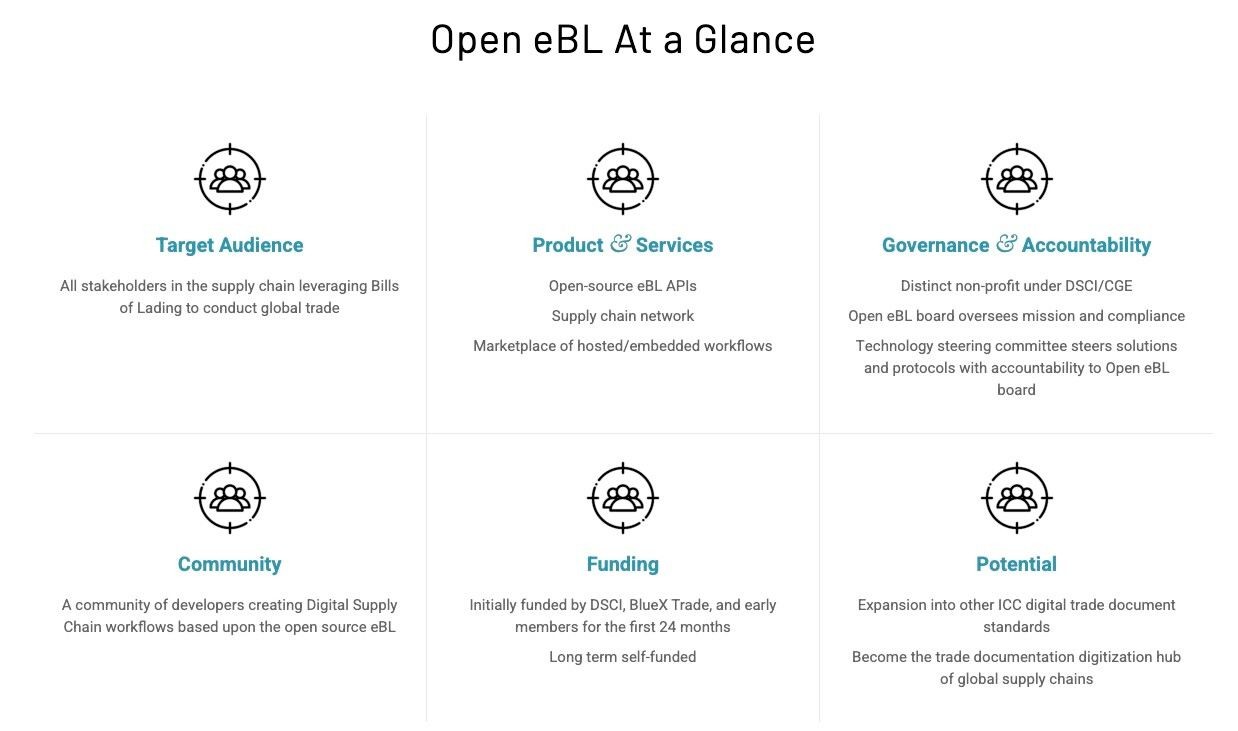
For years, the global supply chain stakeholders have been talking about a digital transformation. However, the progress in this revolution has been hindered by various factors, one of the most significant being proprietary software platforms. To propel the industry forward, a new approach is necessary. Open-source, standards based models hold enormous promise in resolving the issues exacerbated by proprietary platforms.
Current electronic document solutions are closed and proprietary solutions that silo customers' data under a for-profit commercial entity. This approach has several drawbacks. Firstly, it makes it difficult for businesses to share data with each other, as all parties need to be on the same platform, leading to inefficiencies and errors. Secondly, proprietary networks being profit-oriented, can be costly, straining budgets. Thirdly, closed networks aim to lock customers in and are subject to the whims of the commercial operator which can alter terms of service or even cease operations abruptly.
Despite the drawbacks of closed network solutions, they dominate supply chains (TMS solutions are a perfect example). However, recent attempts at closed platforms have been rejected by stakeholders where data privacy and data sharing are significant concerns. One notable example is TradeLens, a blockchain-based electronic document solution developed by IBM and Maersk. Launched in 2018 with much fanfare, TradeLens has since closed due to lack of traction with its closed nature being a major reason. Businesses were reluctant to share their data with a for-profit entity, and concerns regarding high costs and ‘lock-in’ stymied adoption.
To overcome the limitations of proprietary closed networks, an open-source, standards-based electronic document solution is needed. Such a solution should be available to all, respecting their privacy and security concerns. Adopting a standards-based approach would facilitate consistent platform utilization across businesses and would gain the support of business leaders, engineers, developers by simplifying data sharing and collaboration, enabling greater interoperability and efficiency. Ultimately, establishing the open-source solution organized under a non-profit aimed at advancing global business interests should further foster industry trust.
The Benefits of an Open-Source Software Platform
Cost-effectiveness: Open-source software is typically free to download, use, and distribute. This can significantly reduce the total cost of ownership, particularly for startups and businesses seeking to minimize software expenses.
Flexibility and Customization: Open source offers the flexibility to modify and customize the software according to specific needs, enabling users to add features, fix bugs, or tailor the software to suit their requirements, often impossible with proprietary software.
Transparency: The availability of source code allows users to review it, identify security flaws, understand how the software works, and contribute to improvements.
Community Support: Active communities of developers and users often contribute to the open-source code, documentation, and support, offering valuable resources for solving problems and learning best practices.
Security: The “many eyes” theory suggests that open source can be more secure than proprietary software as the availability of source code for public review enables faster identification and resolution of vulnerabilities.
Interoperability and Standards Compliance: Open-source projects typically adhere to open standards, making it easier to integrate with other systems and migrate between different technologies without vendor lock-in.
Innovation and Speed of Development: Open-source projects benefit from contributions from a global community of developers, accelerating innovation and the introduction of new features.
Open eBL, a non-profit under the Center for Global Enterprise (CGE) and the Digital Supply Chain Institute (DSCI) focuses on open-sourcing the electronic bill of lading (eBL) within supply chains. The entity recently launched the Open eBL initiative to establish an open-source industry solution planned for trial within its member community consisting of large supply chain players and stakeholders. This group is composed of supply chain veterans and developers intent on helping the industry deliver on the promise of digitalization. It’s an ambitious project that has the potential to be a game-changer in one of the most impactful areas – Bills of Lading.

Open source will play a crucial role in future supply chain digitization. Open source solutions are more efficient, effective, and affordable compared to closed networks. They are also more secure and less susceptible to fraud. As businesses increasingly adopt open source electronic document solutions, the global supply chain will become more efficient, agile, and resilient.
Note: Sean O’Malley is a founding member of the Open eBL initiative. If you’re interested in learning more, feel free to reach out via LinkedIn.
This post is originally posted on Sean O'Malley's LinkedIn.